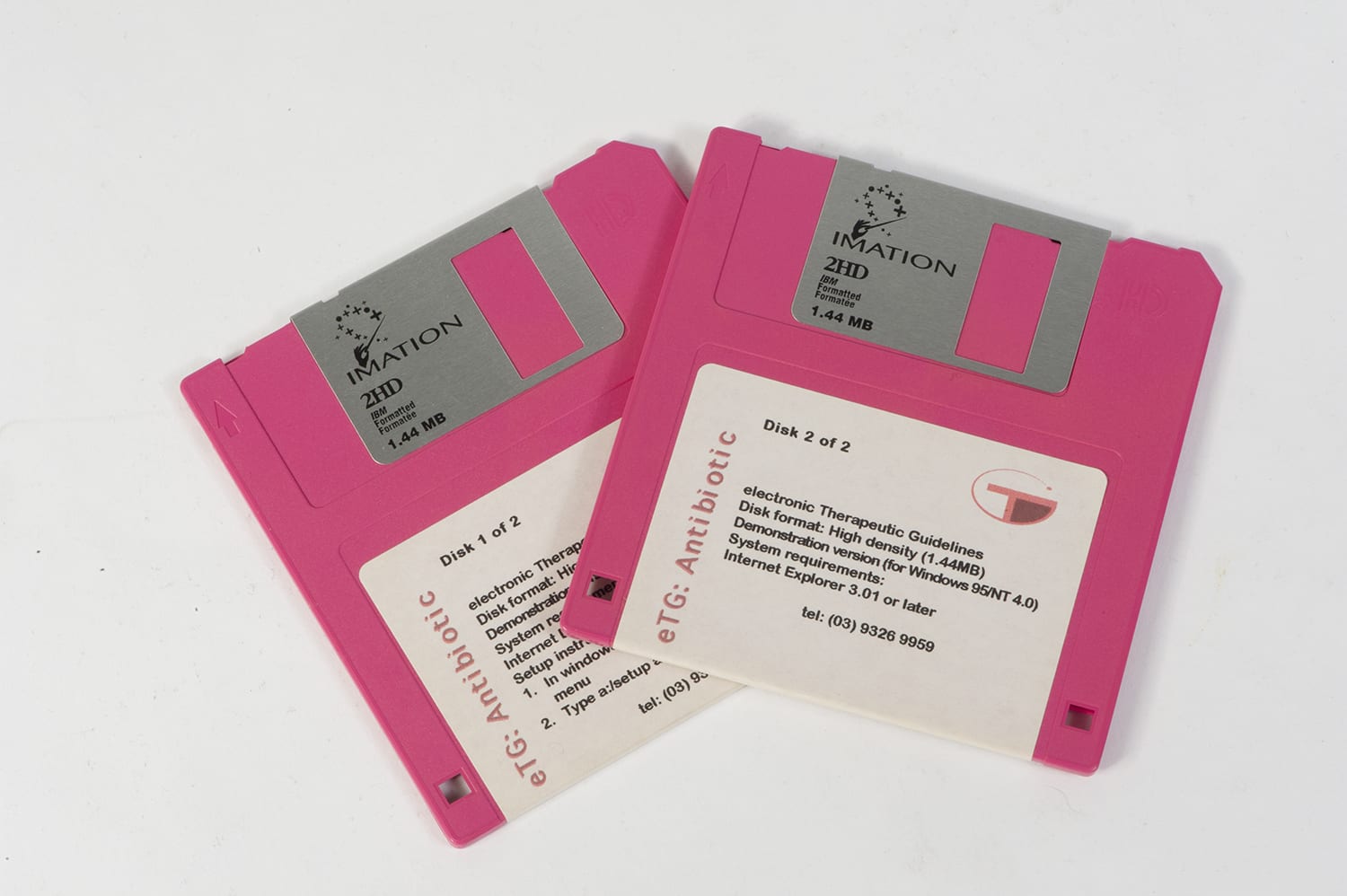In 1996 TGL funded a PhD scholarship to undertake research in pharmaceutical informatics. Andrew Nolan from the University of Newcastle considered the effectiveness of prescribing software in improving prescribing quality. Using Psychotropic Guidelines as a test case, he translated these into HTML Help files to create a first generation electronic version.
Jonathan Dartnell was appointed as part-time IT officer in 1997. Trained as a pharmacist, he also took on the role of electronic publishing officer. In 1998 the Commonwealth Department of Health and Family Services agreed to TGL’s funding request for $125,000 to transform three titles to HTML format. The grant also allowed for the appointment of two more electronic production specialists, Carol Norquay and Souly Phanouvong, to work with Jonathan Dartnell on the project. With Ken Harvey, the team stepped into untested territory.
Antibiotic Guidelines was produced on two pink floppy disks as a proof of concept.
The CD of the first title, Antibiotic Guidelines, was published in December 1998. Licence pricing for each state health department was based on population. For universities, licence pricing was based on the student populations of their medical schools. By 2000, all nine titles published up until that time in book form were available on one CD or as single CDs.




